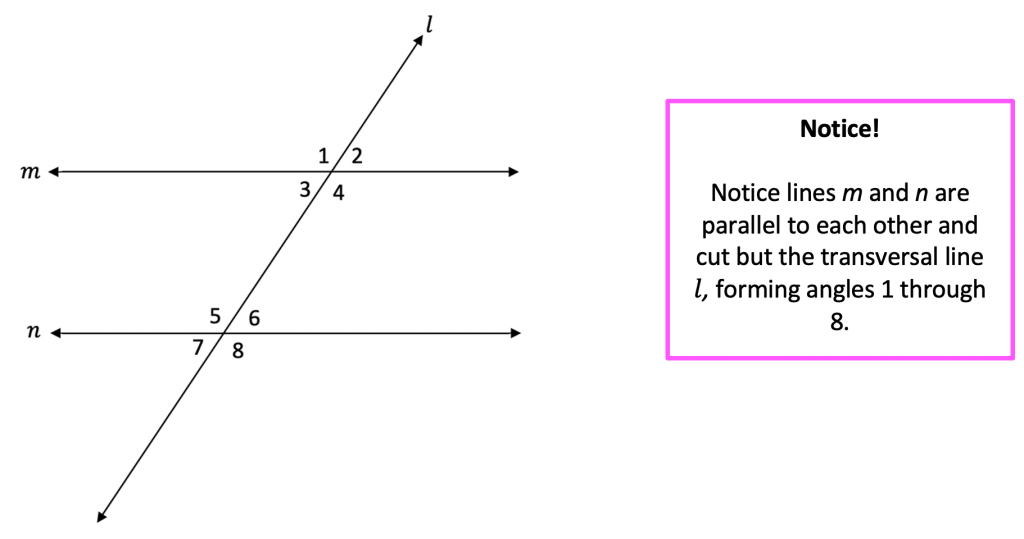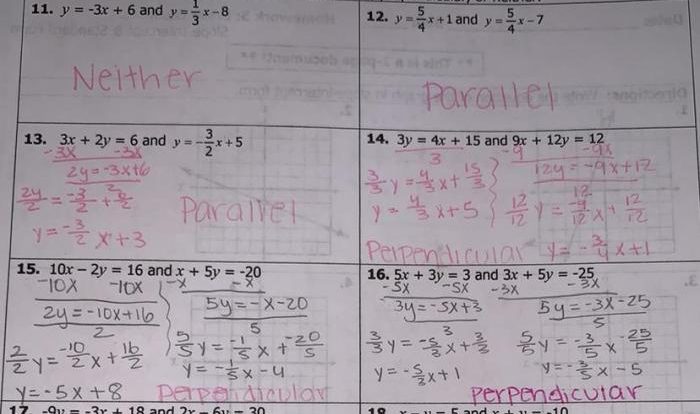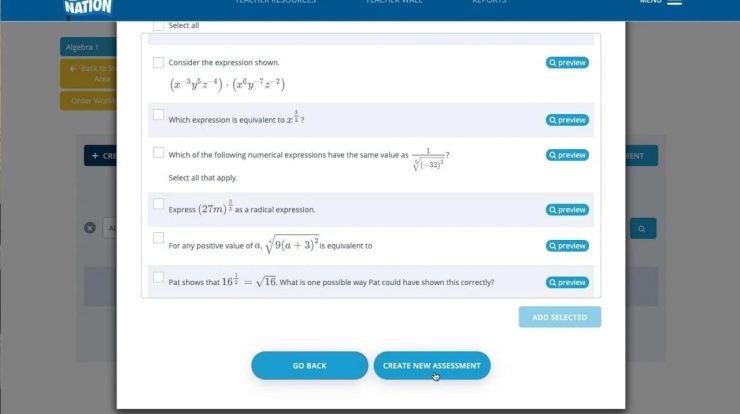In the realm of geometry, parallel lines and transversals emerge as captivating concepts that shape our understanding of angles, lines, and shapes. Embark on an intriguing journey through the quiz parallel lines and transversals, unraveling their intricate relationship and exploring their diverse applications in architecture, engineering, and beyond.
Delving into the fundamentals, we will define parallel lines and transversals, uncovering the unique properties that govern their interactions. We will explore the various types of transversals, dissecting their characteristics and examining the angles they form with parallel lines.
Parallel Lines and Transversals

In geometry, parallel lines are lines that never intersect, no matter how far they are extended. Transversals are lines that intersect two or more other lines.
When a transversal intersects two parallel lines, it creates eight angles. These angles are related to each other in specific ways, which are described by the properties of parallel lines and transversals.
Properties of Parallel Lines and Transversals
The properties of parallel lines and transversals include:
- Alternate interior angles are congruent.
- Corresponding angles are congruent.
- Same-side interior angles are supplementary.
- Vertical angles are congruent.
Types of Transversals
Transversals can be classified into different types based on their relationship with the parallel lines they intersect. The three main types of transversals are:
- Perpendicular Transversal
- Oblique Transversal
- Parallel Transversal
Perpendicular Transversal
A perpendicular transversal is a transversal that intersects two parallel lines at right angles (90 degrees). It forms four right angles at the points of intersection.
Properties:
- Forms four right angles at the points of intersection
- Divides the parallel lines into equal segments
Example:
A line that intersects two parallel lines at right angles, such as the line segment AB in the diagram below:

Angles Formed by Parallel Lines and Transversals: Quiz Parallel Lines And Transversals
When a transversal intersects two parallel lines, it creates eight angles. These angles have specific relationships and properties that can be used to solve geometry problems.
Corresponding Angles
Corresponding angles are angles that are located in the same position relative to the parallel lines and the transversal. For example, the angles labeled ∠1 and ∠5 in the diagram below are corresponding angles.
Corresponding angles are congruent, meaning they have the same measure. This is because the parallel lines are equidistant from each other, so the transversal creates congruent segments that form the corresponding angles.
Alternate Interior Angles
Alternate interior angles are angles that are located on opposite sides of the transversal and inside the parallel lines. For example, the angles labeled ∠2 and ∠6 in the diagram below are alternate interior angles.
Alternate interior angles are also congruent. This is because the transversal creates congruent segments that form the alternate interior angles.
Same-Side Interior Angles
Same-side interior angles are angles that are located on the same side of the transversal and inside the parallel lines. For example, the angles labeled ∠3 and ∠7 in the diagram below are same-side interior angles.
Same-side interior angles are supplementary, meaning they add up to 180 degrees. This is because the transversal creates a straight line, so the sum of the same-side interior angles must be 180 degrees.
Exterior Angles
Exterior angles are angles that are located outside the parallel lines. For example, the angles labeled ∠4 and ∠8 in the diagram below are exterior angles.
Exterior angles are supplementary to the opposite interior angles. For example, ∠4 is supplementary to ∠2, and ∠8 is supplementary to ∠6.
Applications of Parallel Lines and Transversals
Parallel lines and transversals are not only theoretical concepts but also have practical applications in various fields, particularly in architecture, engineering, and design. Their properties and relationships are utilized to solve real-world problems and create functional and aesthetically pleasing structures.
Architecture, Quiz parallel lines and transversals
- Building facades:Parallel lines are used to create uniform and visually appealing facades for buildings. They can be found in windows, doors, and other architectural elements, providing a sense of order and balance.
- Structural support:In structural engineering, parallel beams and columns are often used to support weight and distribute loads evenly. The parallel arrangement of these elements ensures stability and prevents deformation.
- Floor plans:Parallel lines are used in floor plans to delineate rooms, hallways, and other spaces. They help architects create efficient and functional layouts that maximize space utilization.
Engineering
- Bridges:Parallel lines are used in the design of bridges to ensure structural integrity. The parallel arrangement of beams and cables helps distribute weight evenly and prevent collapse.
- Transportation systems:Parallel lines are essential in the design of railways and highways. They ensure that tracks and lanes are aligned correctly, allowing for safe and efficient movement of vehicles.
- Electrical circuits:Parallel lines are used in electrical circuits to connect components in parallel. This arrangement allows for multiple paths for current to flow, increasing efficiency and reducing voltage drop.
Design
- Interior design:Parallel lines are used in interior design to create visual interest and balance. They can be found in furniture arrangements, wall decorations, and other elements.
- Graphic design:Parallel lines are used in graphic design to create logos, typography, and other visual elements. They can be used to convey a sense of order, stability, and movement.
- Product design:Parallel lines are used in product design to create functional and aesthetically pleasing products. They can be found in the design of furniture, appliances, and other objects.
Questions and Answers
What is the definition of parallel lines?
Parallel lines are two lines that never intersect, no matter how far they are extended.
What is a transversal?
A transversal is a line that intersects two or more other lines.
What are the different types of transversals?
There are three main types of transversals: perpendicular transversals, oblique transversals, and parallel transversals.
What are the properties of parallel lines and transversals?
Parallel lines and transversals have a number of properties, including:
- The alternate interior angles formed by a transversal and parallel lines are congruent.
- The alternate exterior angles formed by a transversal and parallel lines are congruent.
- The corresponding angles formed by a transversal and parallel lines are congruent.
- The sum of the interior angles on the same side of a transversal is 180 degrees.

